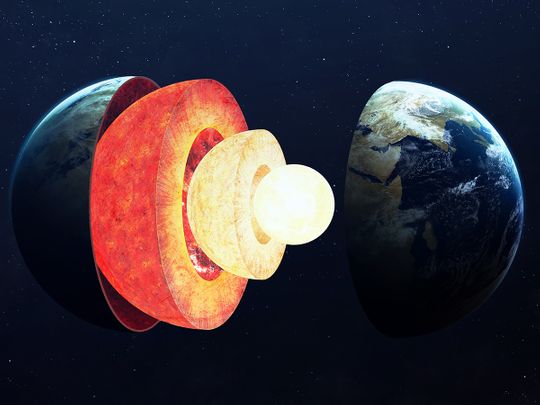
It’s a well-known fact that we know more about outer space than we do about the deepest parts of the ocean. But there’s an even more mysterious place that lies unknown – the centre of the Earth.
Click start to play today’s Spell It, where we look for more ‘data’ on this uncharted territory.
When French novelist Jules Verne wrote Journey to the Centre of the Earth in 1864, speculation was rife about what existed far below – most of the theories supported a hollow core. As time passed, various operations set out to drill the deepest hole on Earth. It became clear that the planet wasn’t an empty shell. It was dense, comprising multiple compact layers.
But even after penetrating through many kilometres of our planet’s outer crust, no drilling mission has ever reached the mantle, or the other layers buried beneath it.
The deepest manmade hole on Earth, also considered the deepest artificial point on Earth, is the Kola Superdeep Borehole in Russia. It’s 40,230 feet (12.2km) deep. Built during the Cold War, the Soviets took nearly 20 years to drill the hole, but it’s still only about one-third of the distance to the Earth’s mantle. The project came to a chaotic halt when the Soviet regime crumbled.
So, what’s beyond the layers of packed rock and soil? A new study in the journal Science Advances, which was published in April 2023, suggests an ancient ocean floor might surround the Earth’s core below the mantle. Researchers used seismic data to create a high-resolution image of the planet’s interior layers, and came to this conclusion.
But because we haven’t ever penetrated below the outer crust, we can only speculate whether this is true. It’s like we have a general idea about the frosting, but are guessing what ingredients form the cake below. According to a June 2023 report in the US-based Discover Magazine, data is usually based on seismic activity or earthquakes, volcanic eruptions that propel deep-Earth elements onto the surface, and meteorites.
To get legitimate answers, researchers will literally have to dig deep and extract samples.
Do you think we’ll ever get to the centre of the Earth? Play today’s Spell It and tell us at games@gulfnews.com.









